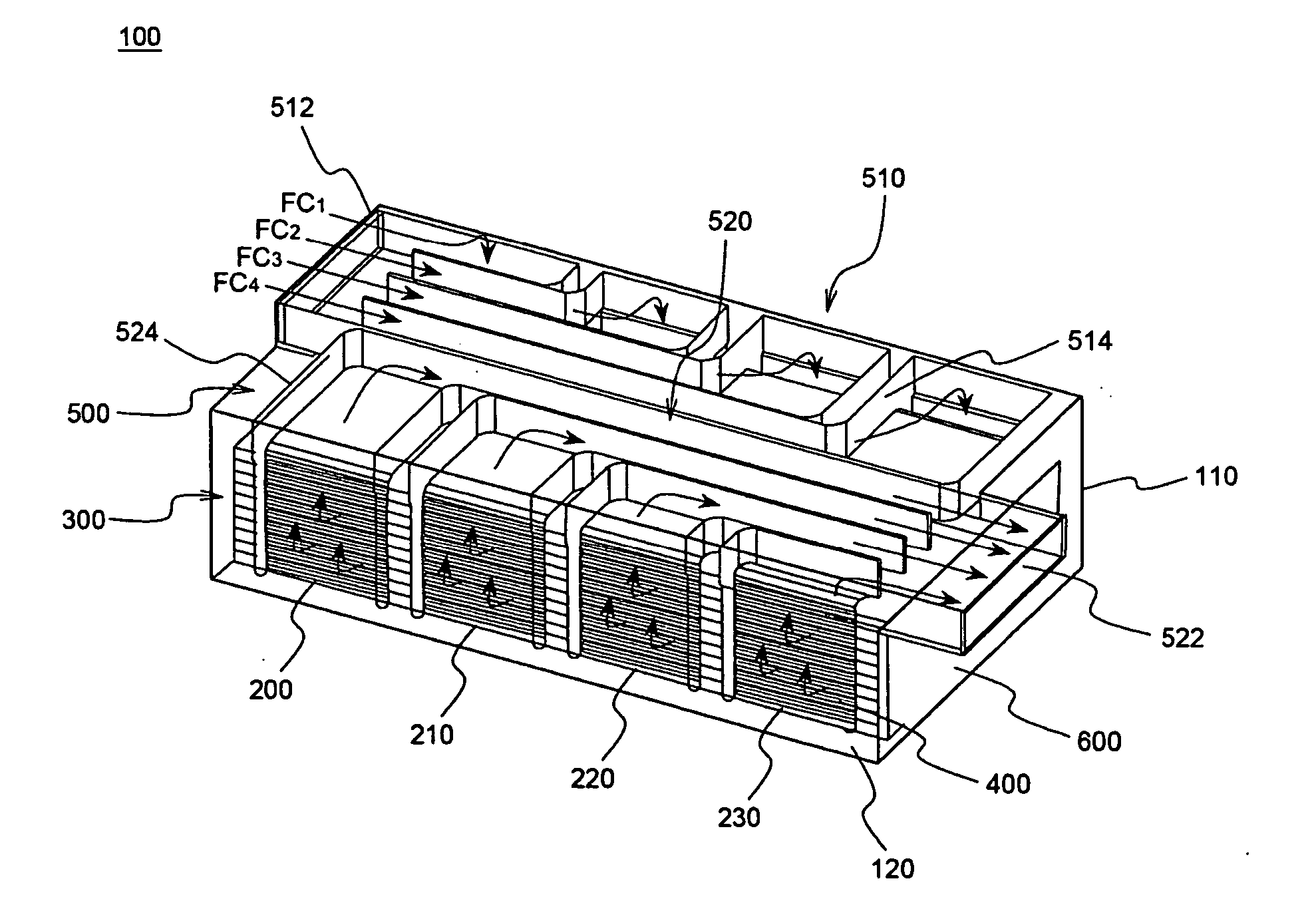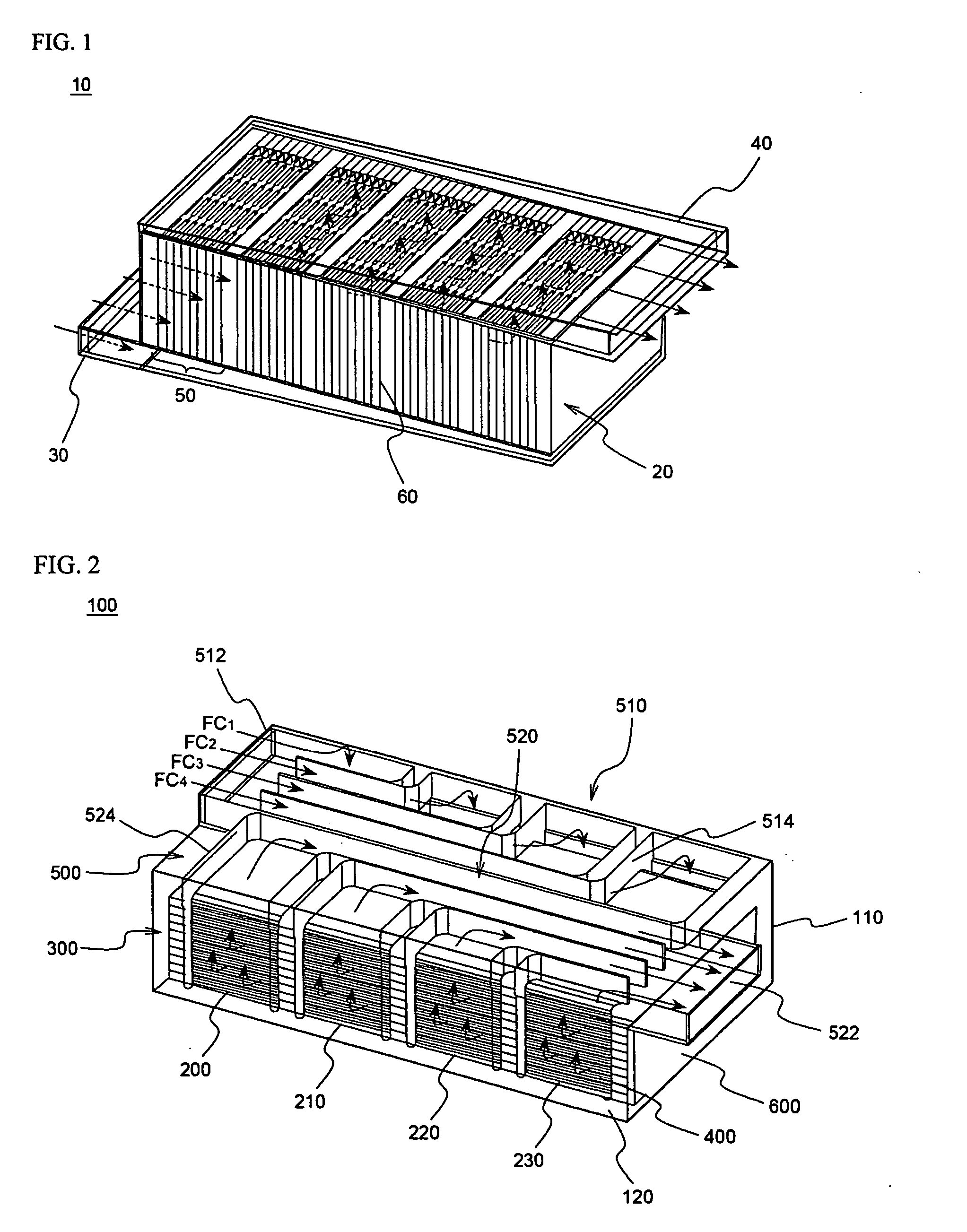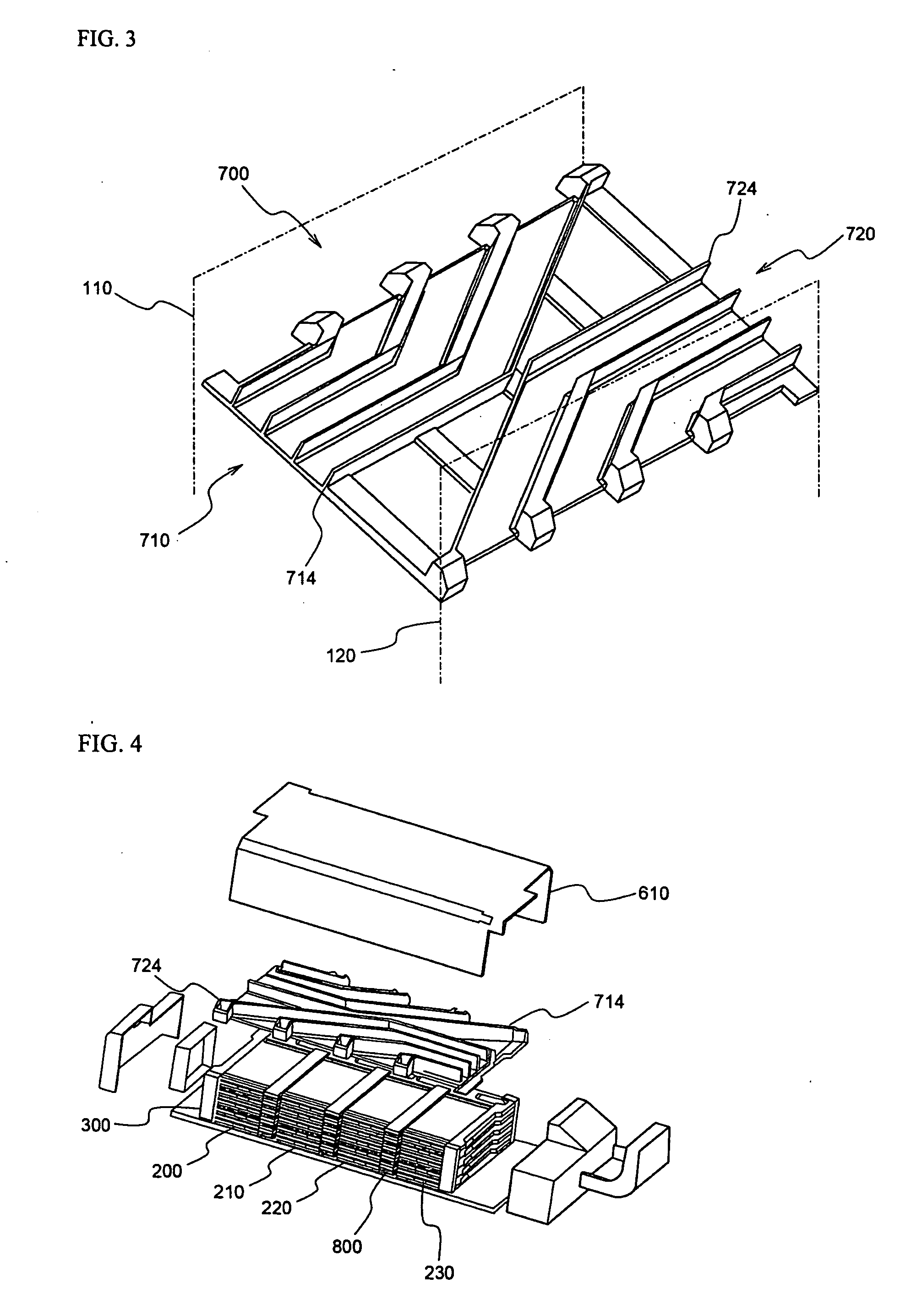Cooling system for battery pack
a battery pack and cooling system technology, applied in the field of battery pack cooling system, can solve the problems of reducing affecting the performance of the battery pack, and generating a large amount of heat, so as to reduce the degradation of the battery pack. the effect of heat generation from the battery pack, reducing the degradation of the battery pack, and minimizing the temperature differen
- Summary
- Abstract
- Description
- Claims
- Application Information
AI Technical Summary
Benefits of technology
Problems solved by technology
Method used
Image
Examples
Embodiment Construction
[0029] Hereinafter, a system for cooling a battery pack according to an embodiment of the present invention will be described with reference to the accompanying drawings. The following description is for the sake of easy understanding of the present invention, and is not intended to limit the scope of the present invention.
[0030]FIG. 2 is a diagram of a battery pack cooling system according to the present invention, which is shown in partially cutaway view showing the interior. Referring to FIG. 2, the battery pack cooling system 100 includes a battery pack 300 consisting of a plurality of battery modules 200, 210, 220, and 230 electrically connected to each other, and a refrigerant guide member 500 arranged at an upper end surface of the battery pack 300. Each of the battery modules 200, 210, 220, and 230 includes a plurality of battery cells 400 electrically connected to each other.
[0031] The refrigerant guide member 500 includes a refrigerant introduction section 510 and a refr...
PUM
 Login to View More
Login to View More Abstract
Description
Claims
Application Information
 Login to View More
Login to View More - R&D
- Intellectual Property
- Life Sciences
- Materials
- Tech Scout
- Unparalleled Data Quality
- Higher Quality Content
- 60% Fewer Hallucinations
Browse by: Latest US Patents, China's latest patents, Technical Efficacy Thesaurus, Application Domain, Technology Topic, Popular Technical Reports.
© 2025 PatSnap. All rights reserved.Legal|Privacy policy|Modern Slavery Act Transparency Statement|Sitemap|About US| Contact US: help@patsnap.com



